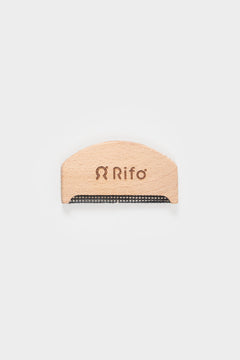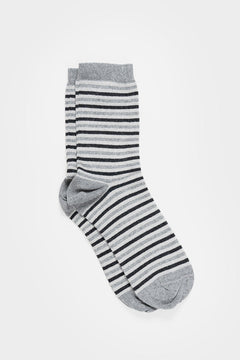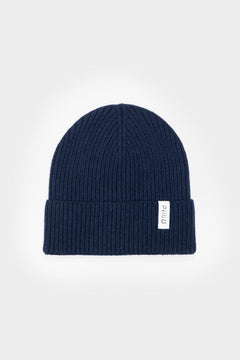Everyone is talking about this year’s news in the circular economy: by 2022 Italian municipalities will be obliged to introduce a separate collection of textile waste.
The legislative decreen.116/2020 that has just come into force is based on a European decree that will outlaw non-sorted collection of textile waste by 2025, and is part of the Circular Economy Action Plan, a plan of actions with precise deadlines, specifically aimed at boosting the circular economy.
The news would indeed seem to be good, and certainly marks the willingness of institutions to focus on the problem. But we must ask ourselves: what does this obligation mean?
Not much so far, due to the uncertainties of authorities, which have yet to find precise guidelines on howto fulfill their obligations. For the time being, all the focus is on the special urban collection containers, which are already available to citizens in 75% of Italian towns. These are the ones we can see:

Will it be sufficient to increase the number of garment bins to achieve a real breakthrough and create a circular model?
That’s what we’re about to focus on in this blog article, taking a look at what urban waste sorting of textiles means, what its limits are and, above all, how this could actually benefit the circular economy.
Sorting in order not to sort: where urban textile waste ends up today
As this report from the European Parliament reveals, almost 26 kg of textiles per inhabitant are consumed in Europe every year. 42% of these become waste and are eventually thrown away. We’re talking about 11 kg of clothes per person, i.e. 36 of our men’s cashmere sweaters.
Let’s forget about the extent of these numbers for a second (we’ll be back on this point at the end of the article) and have a look at what happens to these garments in Italy.
During a round table organised by Ricicla.tv, in which representatives of Ispra (National Institute for Environmental Research) also took part, it was clearly stated that only 2.6 kg out of these 11 are recovered through the dedicated urban containers in Italy. All the rest ends up unsorted.
So, as of today, it is these 2.6 kg per inhabitant that we are talking about, referring to the waste we throw in urban containers.
The subject of separate collection of textile waste in Italy has already been addressed by us in the past, referring to the 2019 L’Italia del Riciclo report. Now we have checked the same, more up-to-date report and realised that the situation has fundamentally remained unchanged.

68% OF THE COLLECTED WASTE IS DESTINED FOR REUSE. What does this mean? It means that it gets sorted for second-hand markets, a few of which are European and most of which are African (we talked about this issue in this article). There, bales of old Western clothing are resold sight unseen, leading to the great risk that much of the content may not be suitable for resale and therefore end up in large open dumps. This aspect is very well reported in the French documentary “Où finissent nos vêtements”, which we highly recommend.

29% IS RECYCLED. Yes, but how and for what purpose? Such materials are not sorted by type, and thus end up in a cycle which, although virtuous, does not properly exploit them. Through this process everything is put together to make industrial rags, padding, soundproofing materials and industrial insulation. Might it be possible to better differentiate textiles and retain their features?

3% IS LANDFILLED OR INCINERATED. And this percentage will increase as soon as the separate collection of textile waste becomes mandatory for municipalities. Here, in fact, some of the waste that currently ends up in unsorted waste will also be collected.

The consequences of compulsory textile sorting
So what is hindering proper waste sorting and a more efficient recycling process?
Why is it that every European throws away 11 kg of clothes every year, on average, we in Italy collect only 2.6 kg?
The answer is probably due to the fact that containers are not widely enough distributed in cities, as we have seen.
Increasing and spreading them over 100% of Italian municipalities would certainly lead to a more widespread waste collection, but this will have important consequences… As mentioned earlier, with the introduction of mandatory separate collection of textiles, administrations will find themselves having to manage much larger quantities of low-quality waste, without having local supply chains and facilities for sorting and recycling.

As mentioned earlier, with the introduction of mandatory separate collection of textiles, administrations will find themselves having to manage much larger quantities of low-quality waste, without having local supply chains and facilities for sorting and recycling.
Which actions can really help the circular economy in the textile sector
If sending away to distant countries and out of sight everything we have accumulated over the years is not a solution, the only one left is to keep these old clothes and recycle them.
In Prato, in our textile district, there are many companies that deal with recycling. We at Rifò collaborate with them every day and try to narrate their craft peculiarities.

We’re not sure it would help to meet such an important increase in the amount of garments we need to transform into new resources, yet investing in these supply chains and making them work could certainly give a positive impulse to the circular textile economy.
All this in our opinion, provided that:
1. Selecting the different textile materials beforehand, without putting everything in the usual container, as it happens with any other type of waste. This would also involve asking people to become aware of what they have in their wardrobes, and to choose it based on how it can be disposed of more easily.
2. Investing in research and development to be able to recycle more types of materials while preserving the quality of the final product.
3. Start considering waste as an economic asset from a legal point of view. This would give it a higher value and perhaps avoid scenes of this kind in the streets:

Transparent services and traceable supply chains
We are convinced that a recycled product must be of the equivalent quality to the original one and that’s precisely why we have invested our energy in specific recycling projects, linked to the single material and able to create traceable and local supply chains.
This is how our circular service for 100% wool and 100% cashmere garments and Re-Think Your Jeans, in collaboration with NaturaSì, work.
Thanks to these, we collect old garments that meet the requirement of the purest possible composition and place them directly into local recycling chains, which is why they have a low carbon footprint.
Why should cenciaioli go and buy bales of garments that are selected by type, perhaps abroad, if there is waste (or rather secondary raw materials) to be used here on the territory?

Back to basics
And finally, we would like to take up what we said at the beginning:
"Every year, in Europe, almost 26 kg of textile products per inhabitant are consumed . [...] 42% of these become waste and are eventually thrown away. We’re talking about 11 kg of clothes per person…".
This means that from year to year in Europe it is normal to throw away almost half of all the clothes and textiles we buy. It means we have an underlying problem.
We will never stop sending tons and tons of clothes to Africa, which will then end up in open dumps, if we don't start reducing our purchases, if we don't direct them towards durable, quality things.
No separate waste collection will save us if we do not reduce our waste.

This is why we at Rifò support a circular economy, because it would be utopian to think of stopping buying. But it is not enough, we want to support a different way of considering what we wear, what we have chosen to put in our wardrobe. We must return to affection, to considering each garment as unique and necessary.
We have to go back to emotions.








